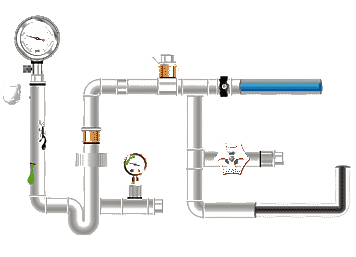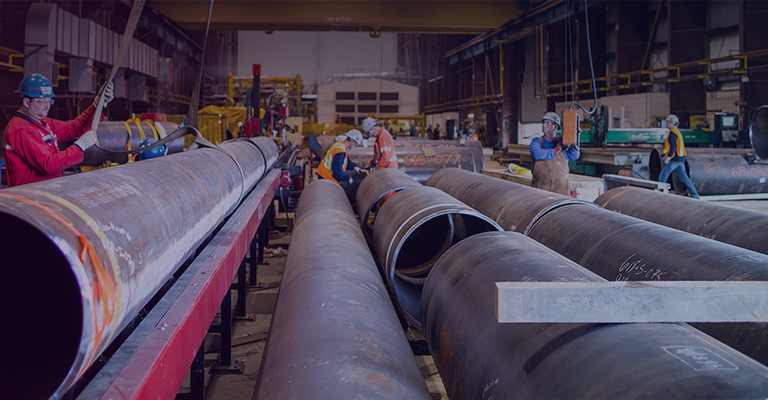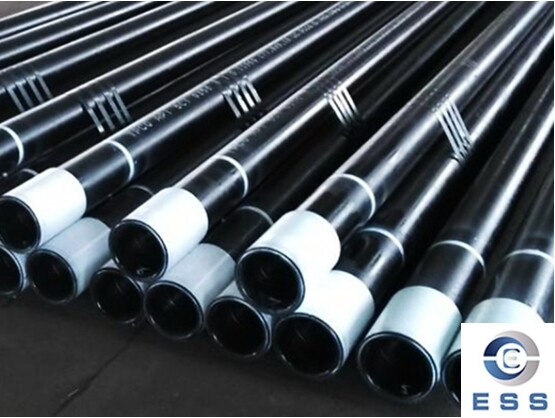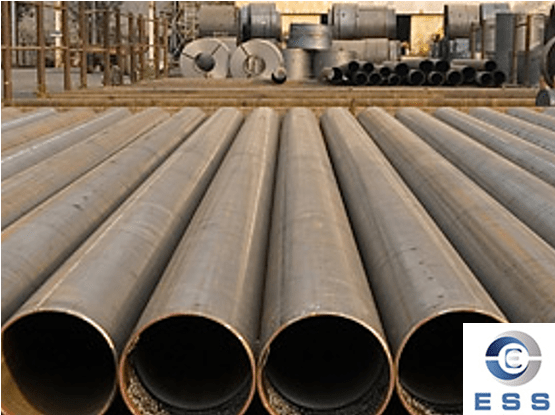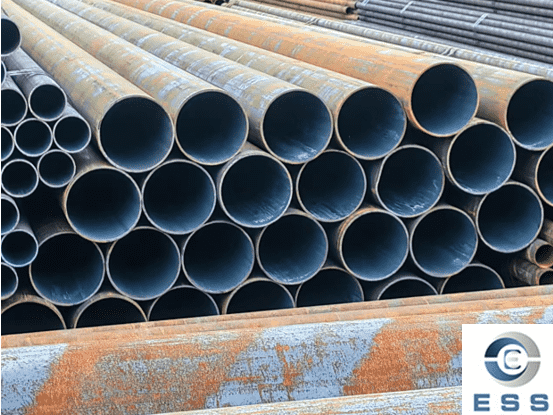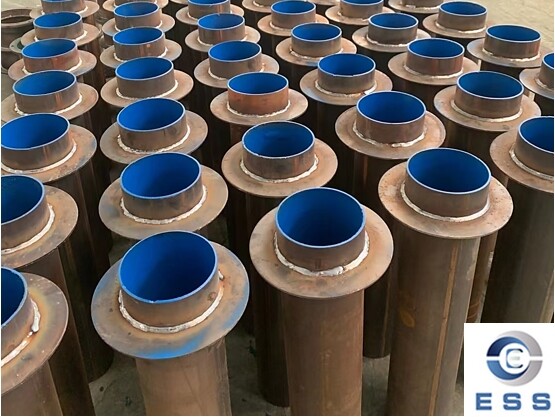
Casing pipe weight calculation is an important part of engineering design and material
budgeting. Accurately calculating the weight of the casing pipe not only helps
to reasonably allocate materials, but also avoids resource waste and cost
overruns. Next, we will discuss the calculation method of casing pipe weight in
detail.
Calculation method of ordinary casing
pipe weight
The weight of the casing pipe can be
calculated by the following formula:
Weight (kg) = length (m) × diameter (mm) × wall thickness (mm) × material density (kg/m³) × π/4
Wherein, the length is the actual length of
the casing pipe, the diameter is the average of the inner diameter and the
outer diameter, the wall thickness is the outer diameter minus half of the
inner diameter, the material density can generally be found in the material
manual, and π is the pi.
For example, a casing pipe with a diameter
of 50mm, a wall thickness of 4mm, and a length of 3m has a material density of
7800kg/m³, and its weight is calculated as follows:
Weight (kg) = 3m × (50mm+54mm)/2 × (54mm-50mm)/2 × 7800kg/m³ × π/4
= 3m × 52mm × 2mm × 7800kg/m³ × 3.14/4 = 48.7kg
Weight calculation method for casing
pipes of different materials
1. Steel casing pipe
The density of steel is generally 7.85g/cm³. Multiply the steel density and the cylindrical capacity of the
casing pipe to get the weight of the steel casing pipe. It should be noted that
the density of different types of steel may vary slightly. If mild
steel pipe or carbon
steel pipe material is used, the technical parameters of the specific steel
should be consulted in the actual calculation.
2. Copper casing pipe
Copper has a high density, generally
8.96g/cm³. Similar to steel casing pipe, the weight of
copper casing pipe can be calculated using the above formula. Due to the high
price of copper, accurate calculation of the weight of copper casing pipe is
crucial for cost control.
3. Plastic casing pipe
The density of plastic casing pipe is much
lower than that of metal casing pipe, usually between 0.9 and 1.4g/cm³. When calculating the weight of plastic casing pipe, the above
formula can also be used, but the density needs to be determined according to
the specific plastic material. For example, plastic casing pipe may be used in
some hydraulic
tubes or low-pressure steel pipe systems, and its weight calculation should
also be accurate.
Weight calculation method of arc casing
pipe
Arc casing pipe is often used to make arc
structures, such as tunnels, bridges, ships and other construction projects.
The materials of arc casing pipe are mainly round steel, steel plate, etc., and
the weight of arc casing pipe of different materials is also different. The
weight calculation method of arc casing pipe depends on its diameter, material
and length.
1. Weight of round steel arc casing pipe = π
× material density × (outer diameter²-inner diameter²) ÷ 4 × length
Wherein, the outer diameter and inner
diameter represent the outer diameter and inner diameter of the arc casing pipe
respectively, the material density can be obtained by querying the material
density table, and the length is the actual length of the arc casing pipe.
2. Weight of steel plate arc casing pipe =
(outer arc length-inner arc length) × plate thickness × material density × length
Wherein, the outer arc length and inner arc
length represent the arc length of the outer and inner sides of the steel plate
arc casing pipe respectively, and the plate thickness, material density and
length are calculated in the same way as the round steel arc casing pipe. In
some large projects, the arc casing pipe may be used in conjunction with
components such as pipe
flanges, and its weight calculation is also of great significance to the
material budget and construction plan of the overall project.
Precautions in practical application
1. Accurate measurement
To ensure the accuracy of weight
calculation, the outer diameter, inner diameter and height of the casing pipe
should be accurately measured. For casing pipe made of high-precision pipes
such as seamless
steel pipes, accurate measurement is particularly important. Any slight
error may lead to deviation in weight calculation.
2. Material confirmation
Casing pipes of different materials have
different densities, so the material and corresponding density of the casing
pipe should be confirmed before actual calculation.
3. Shape considerations
If the casing pipe is irregular in shape or
uneven in wall thickness, the calculation formula should be adjusted
appropriately to reflect the actual situation. For example, for conical or
elliptical casing pipes, the corresponding capacity calculation formula needs
to be used.
4. Unit unification
During the calculation process, ensure that
all measurements and parameters use the same unit to avoid calculation errors.
Application of casing pipe weight
calculation
1. Engineering design
Casing pipe weight calculation is the basic
data in the design process and an important basis for the selection,
calculation and evaluation of various parameters, materials and accessories.
2. Construction site
The application of casing pipe weight
calculation is very common. By calculating the weight of the casing pipe, the
selection of lifting equipment, the number of pulleys and the selection of
suitable lifting schemes can be determined, thereby ensuring the safety and
smooth implementation of the entire construction process.
3. Carrying capacity during transportation
During transportation, it is necessary to
select the transportation tool and adjust the loading quantity of the vehicle
according to the actual weight of the casing pipe to ensure safety and
efficiency during transportation.
Summary
In short, the weight calculation of the
casing pipe needs to consider many factors, including the size, quantity,
material, calculation accuracy, etc. of the casing pipe. In actual engineering
design, calculations should be made according to actual conditions, and
attention should be paid to the influence of various factors to ensure that the
weight of the casing pipe is controlled within a reasonable range.









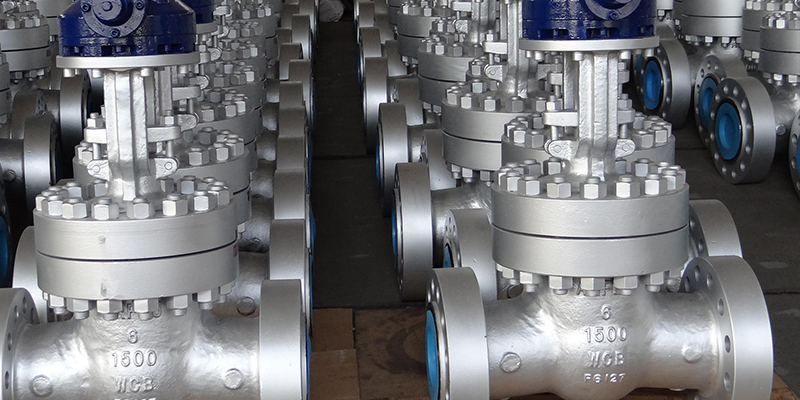
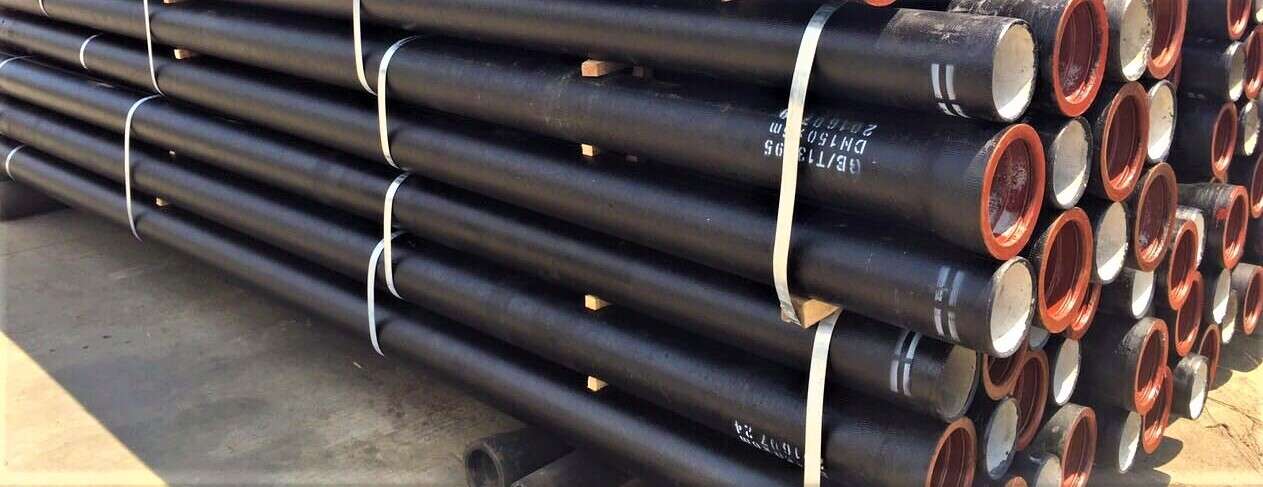


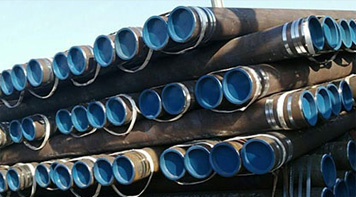 Eastern Steel Manufacturing Co.,Ltd not only improve product production and sales services, but also provide additional value-added services. As long as you need, we can complete your specific needs together.
Eastern Steel Manufacturing Co.,Ltd not only improve product production and sales services, but also provide additional value-added services. As long as you need, we can complete your specific needs together.
